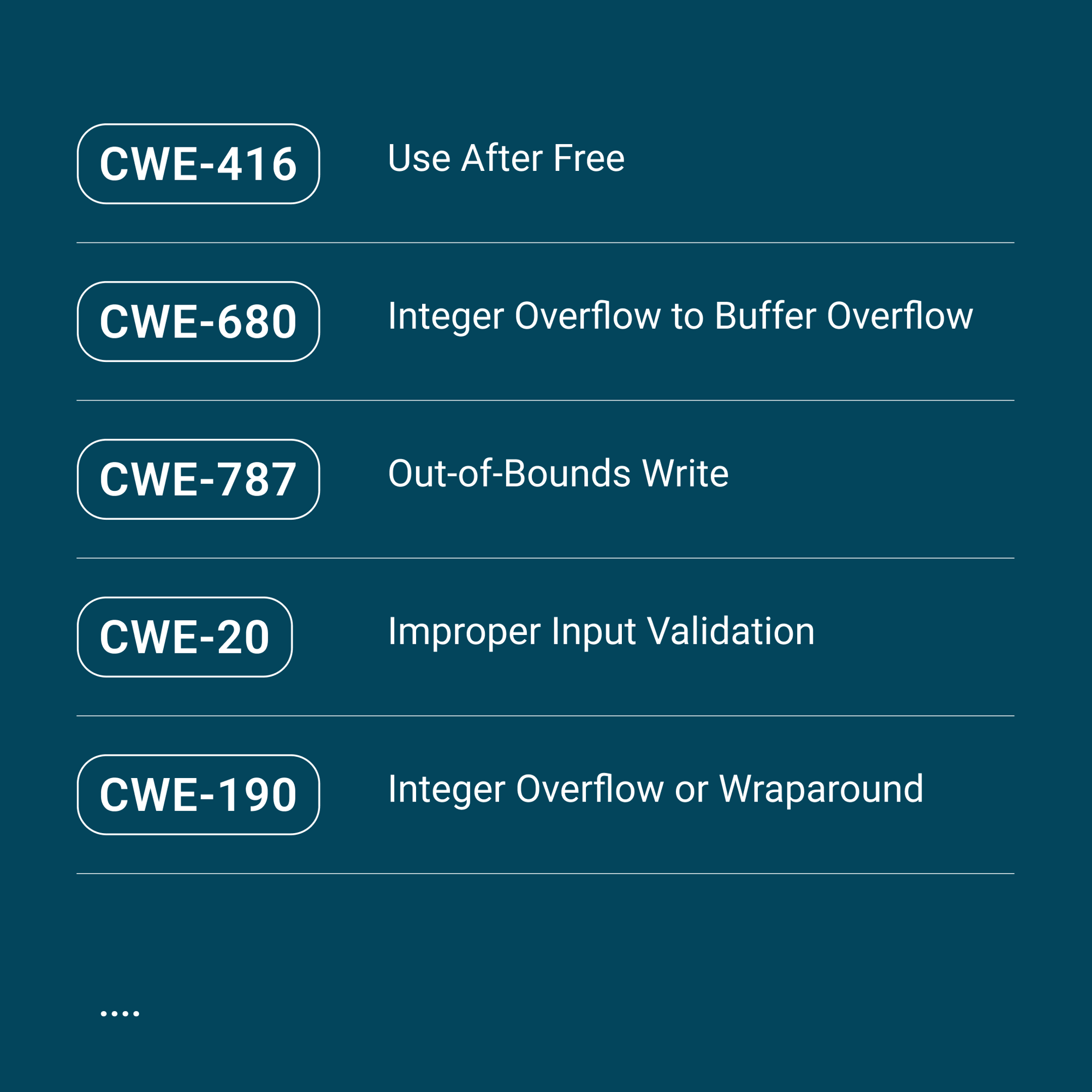Hardware-independent automotive software testing
Automate your software testing with an AI-driven fuzzing platform for early bug and vulnerability detection, all without hardware dependencies. Enable your developers to reproduce and fix issues in minutes, not weeks.

Three reasons to elevate your automotive software security with fuzz testing
Find critical bugs and their root cause in minutes
White-box fuzzing is the fastest way to detect memory corruption errors and find their root cause. It analyzes source code and shows exactly where and how an issue occurs.
Enable Software-in-the-Loop testing
With Code Intelligence, you can test Classic AUTOSAR Applications at the system level by using our simulator and identify real-time bugs without the need for specialized hardware.
Comply with industry standards
Fuzz testing is highly recommended by ISO/SAE 21434 'Road vehicles — Cybersecurity engineering', and Automotive SPICE for Cybersecurity.
What our clients say about Code Intelligence
ANDREAS LACKNER
SENIOR SOFTWARE DEVELOPMENT ENGINEER, VECTOR INFORMATIK
“By reducing the manual effort for creating and integrating fuzz tests, we are able to bring our cycle time down and further improve the quality of our embedded software.”
MICHAEL VON WENCKSTERN
PRODUCT CYBERSECURITY GOVERNANCE, RISK AND COMPLIANCE SPECIALIST, CONTINENTAL AG
“One of the biggest advantages of instrumented fuzz testing is that you can execute your code in a Software-in-the-Loop simulator. My favourite part of instrumented fuzzing is that finding the root cause is so easy, and for a manager, it means I can save budget.”
ANDREAS WEICHSLGARTNER
SENIOR TECHNICAL SECURITY ENGINEER, CARIAD
"Thanks to Code Intelligence fuzzing approaches, our security testing became significantly more effective. All our developers are now able to fix business critical bugs early in the development process, without false-positives."
THOMAS DOHMKE
CEO, GITHUB
”Code Intelligence helps developers ship secure software by providing the necessary integrations to test their code at each pull request, without ever having to leave their favorite environment. It's like having an automated security expert always by your side.”
THOMAS TSCHERSICH
CHIEF SECURITY OFFICER, DEUTSCHE TELEKOM AG
”With Code Intelligence, securing your software can take new paths in terms of quality and efficiency.”
ECKART HEYNE
PRODUCT CYBERSECURITY AND PRIVACY OFFICER, CONTINENTAL AG
“Using fuzz testing by Code Intelligence helped our team pass ASPICE for Cybersecurity assessments and obtain ISO 21434 certification. Our products are now more secure. We presented the OEM with the fuzzing results and received positive feedback.”
SALEH HEYDARI
VP OF SOFTWARE ENGINEERING, XOS TRUCKS
”Thanks to Code Intelligence we were able to remediate deeply hidden issues, allowing us to ensure our vehicular software’s optimal functionality and safety. Coming up with the right unit tests for these cases would have been super difficult. With Code Intelligence’s AI-powered tests, we had the first finding within hours!”
From 0 to 80 in 2 seconds. Code Coverage with CI Fuzz.
Resolve issues seamlessly with instant access to a full stack trace at your fingertips.
Let CI Fuzz automatically search for issues in the code and dig deeper every minute.
Maximize pipeline performance that doesn't compromise software integrity.
Fuzz Testing with Code Intelligence

Find what others miss – and get it fixed
| CWE-119 | Improper Restriction of Operations Within the Bounds of a Memory Buffer | CWE-416 | Use After Free |
| CWE-823 | Use of Out-of-Range Pointer Offset | CWE-476 | NULL Pointer Dereference |
| CWE-786 | Access of Memory Location Before Start of Buffer | CWE-590 | Free Memory Not on the Heap |
| CWE-680 | Integer Overflow to Buffer Overflow | CWE-362 | Signal Handler Race Condition |
| CWE-466 | Return of Pointer Value Outside of Expected Range | CWE-366 | Race Condition Within a Thread |
| CWE-787 | Out-of-Bounds Write | CWE-367 | Time-of-Check Time-of-Use (TOCTOU) Race Condition |
| CWE-125 | Out-of-Bounds Read | CWE-368 | Context Switching Race Condition |
| CWE-129 | Improper Validation of Array Index | CWE-421 | Race Condition During Access to Alternate Channel |
| CWE-193 | Incorrect Calculation of Buffer Size | CWE-1223 | Context Switching Race Condition |
| CWE-193 | Off-by-One Error | CWE-662 | Improper Synchronization |
| CWE-195 | Signed to Unsigned Conversion Error | CWE-758 | Reliance on Undefined, Unspecified, or Implementation-Defined Behavior |
| CWE-839 | Numeric Range Comparison Without Minimum Check | CWE-562 | Return of Stack Variable Address |
| CWE-843 | Access of Resource Using Incompatible Type ("Type Confusion") | CWE-587 | Assignment of a Fixed Address to a Pointer |
| CWE-1257 | Improper Access Control Applied to Mirrored or Aliased Memory Ranges | CWE-588 | Attempt to Access Child of a Non-Structure Pointer |
| CWE-190 | Integer Overflow or Wraparound | CWE-1102 | Reliance on Machine-Dependent Third-Party Components |
| CWE-20 | Improper Input Validation | CWE-1105 | Insufficient Encapsulation of Machine-Dependent Functionality |
| CWE-415 | Double Free |
From start to findings – with one command
.webp?width=350&height=350&name=AI%20Test%20Agent%20(new).webp)
Don’t just comply – make your product robust
See AI-Automated Fuzz Testing In Action
Book your free demo with one of our senior engineers now and take the first step towards robust, secure software development with Code Intelligence.
- Automate software testing for embedded systems.
- Detect critical bugs & vulnerabilities early in the development.
- Uncover only actual issues without false positives.
- Enable developers to reproduce & fix issues in minutes, not weeks.
- Ensure compliance with industry standards.
Why Static Code Analysis alone can't prevent all vulnerabilities
1. Static Analysis (SAST) generates many false positives.
It reports issues that aren’t actually a problem and produces duplicates.
2. Static Analysis can’t detect all types of vulnerabilities.
Because it doesn’t analyze the program during execution, SAST can’t detect dynamic or runtime-specific issues such as complex buffer overflows, use-after-free, double-free errors, heap corruption, and others.
Learn more about its limitation and how to overcome them with fuzz testing by downloading a free copy of the white paper.
.png?width=400&height=310&name=White%20paper%20-%20Fuzz%20Testing%20+%20Staticc%20Analysis%20(Mockup).png)
